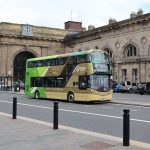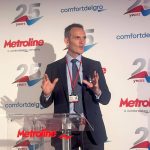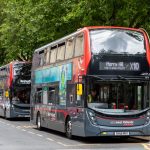In the latest of our series on new and emerging powertrain technologies, our expert considers the environmental cost of AdBlue and the attraction of hydrogen
AdBlue is an aqueous solution of urea used in the Selective Catalytic Reduction (SCR) of the oxides of nitrogen found in heavy diesel engine exhaust gases.
All Euro 6 heavy-duty diesel engine exhaust systems have SCR treatment.
AdBlue is carried on vehicles in an additional fluid tank; its consumption is a small percentage of fuel consumption.
The transport industry is very focused on reducing the carbon footprint of fossil-fuelled engines. The carbon footprint is directly proportional to fuel consumption. Fuel economy, use of renewable fuel or a proportion of renewable fuel, are the only practical means of reducing carbon footprint.
But what of the carbon footprint associated with the production and distribution of AdBlue?
AdBlue, like all man-made products has a carbon footprint associated with its manufacture. This is not quoted by vehicle manufacturers. To understand this the process used to manufacture AdBlue must be examined. Firstly, hydrogen is produced from natural gas. The hydrogen is reacted with atmospheric nitrogen to produce ammonia and then urea. The urea solution is diluted to around 32.5% and sold as AdBlue.
The nearest AdBlue producing plant to the UK is in Sluiskil in the Netherlands. Transportation and distribution of AdBlue adds to its carbon footprint.
A study reveals that the effective minimum additional mass of carbon dioxide contributed per-km by a bus from the use of AdBlue is 4.30mg. It’s interesting but not too significant. However, over the whole UK parc of coaches, buses and HGVs, assuming the general use of AdBlue, the annual CO2 contribution from AdBlue would be around 118,000 tonnes. That’s a bit more significant.
Hydrogen
Hydrogen has been under development as a vehicle fuel for many years. In recent times hydrogen-fuelled buses have been experimentally introduced in a number of cities including London. But why the long-term interest in it as a fuel?
It is the smallest, lightest element of all. It is also the most abundant element in the universe, but does not exist in nature in isolation as a pure element. It is chemically very reactive and exists, for example, in combination with oxygen as water (H2O) and in combination with carbon to make all the hydrocarbons from methane (CH4), diesel fuel (typically C15H32) and so on.
Hydrogen is flammable and when it burns it forms only water, hence its attraction as a fuel. The only emission from a hydrogen-fuelled engine is water. So why are we not all driving hydrogen fuelled vehicles? The devil, as usual, is in the detail. Next month we will look at how hydrogen is produced, its environmental credentials, and its challenges.
- Our industry expert speaks with authority and can back up all of his facts, but what do you think? Email editorial@divcom.co.uk if you agree or disagree with him.
























